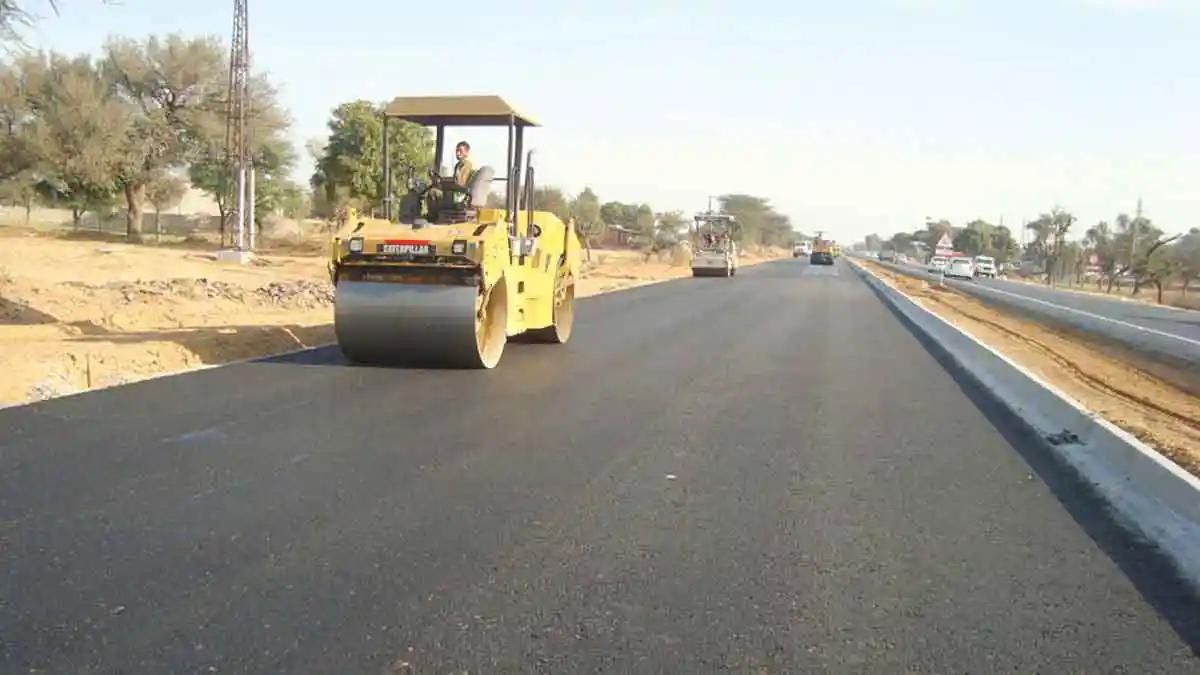Gujarat : Vadodara State Highway to Feature India’s First Cement Grouted Bituminous Mix
This innovative project marks the first time this construction technique is being used in India, spanning a 4.11 km stretch of the Vadodara-Waghodia State Highway (158) in Gujarat

Advertisement
VADODARA,GUJARAT : A section of the state highway leading to Waghodia is being constructed using a cement grouted bituminous mix (CGBM) by the Roads and Buildings Department in Vadodara district. This innovative project marks the first time this construction technique is being used in India, spanning a 4.11 km stretch of the Vadodara-Waghodia State Highway (158).
The trial section of the CGBM has already commenced, designed meticulously after rigorous testing of materials to ensure optimal performance. The project’s testing phase was attended by notable experts, including Dr. Manoj Kumar Shukla, Senior Principal Scientist from the Central Road Research Institute (CRRI), and Dr. Sumon Chakraborty, Co-Managing Director of Megnicrete, who has conducted extensive research on cement grout.
Traditionally, road construction in India has relied on two primary methods: flexible pavements using asphalt and rigid pavements using reinforced cement concrete (RCC). However, the CGBM approach offers a hybrid solution that combines the advantages of both methods while mitigating their respective drawbacks.
Before delving into the specifics of CGBM, it is essential to understand the conventional road construction process. The California Bearing Ratio (CBR) test is a crucial preliminary step conducted by the Department of Roads and Buildings. This test assesses the mineral composition and hardness of the soil, determining the appropriate layers and construction techniques based on the anticipated load and pressure from vehicular traffic.
Road expert K.R. Thorat highlights the benefits of semi-rigid pavements like CGBM, which eliminate the high costs and lengthy treatment times associated with RCC roads. “By implementing this effective solution, roads can be constructed to be stronger and more durable, capable of withstanding harsh weather conditions and heavy traffic more efficiently,” Thorat explains. The CGBM method not only accelerates the construction process but also enhances the longevity and resilience of the roadway.
Dr. Manoj Kumar Shukla and Dr. Sumon Chakraborty emphasized the importance of this project during the testing phase. Their presence underscores the scientific rigor and innovative spirit driving this initiative. The successful implementation of CGBM could revolutionize road construction practices across India, setting a new benchmark for infrastructure development.
Officials are optimistic about the potential of CGBM to transform road construction, offering a robust alternative that balances cost, durability, and efficiency. As the project progresses, it is poised to serve as a model for future road construction projects nationwide.
Advertisement

